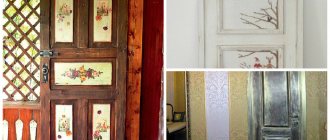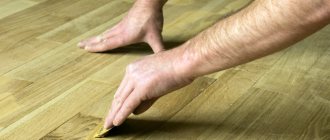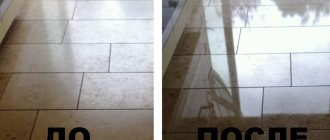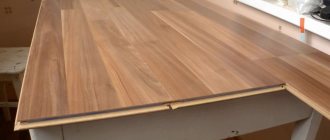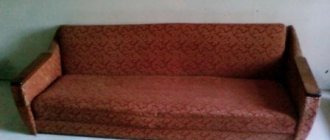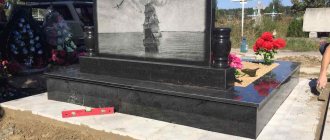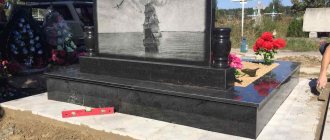It is human nature to grieve the loss of a loved one. They try to preserve the memory of the deceased, their respect and love for him, by erecting a tombstone. However, over time, the monument loses its appearance, cracks and chips appear on it, inscriptions and drawings fade. Therefore, many are wondering whether it is possible to restore the brightness and aesthetic appeal of portraits and epitaphs on monuments. We will answer that it is possible. Indeed, today there are several ways to update the ritual engraving on tombstones: on your own or seek help from specialists.
The most effective way to restore inscriptions is to use the services of professionals. Of course, if we take into account the financial side, not everyone can use the services of restorers. You can do the work yourself, but initially it is advisable to become thoroughly familiar with the rules of restoration and all the materials used.
Is it possible to restore the brightness of the portrait and inscriptions on the monument?
Tombstones lose their aesthetic appeal and brightness over time. Cracks and chips appear on them, epitaphs and portraits become duller.
You can restore their appearance:
- on one's own;
- ordering work from masters.
Carrying out restoration work with your own hands is carried out when the necessary tools have been prepared and their technologies and methods have been studied. However, a person inexperienced in this matter will not be able to sufficiently restore the brightness of the epitaphs on the monument or its aesthetics.
Of course, the issue of cash costs remains important. If a person is willing to pay for the services of a master, restoration work will be carried out at a consistently high level. Granite or marble monuments, inscriptions and portraits on them will be restored to almost their original appearance. Before you learn how to restore the inscription on a monument with your own hands, you need to prepare things for restoration work and chemicals.
Necessary equipment and materials
Restoring epitaphs on tombstones involves a number of works. To do everything right, you will need:
- Copper sulfate.
- A napkin or soft rag, preferably microfiber.
- Degreasing liquid or solvent.
- Acrylic paint or pigment for working with stone (titanium white for granite).
- Medium sized flat brush.
- Fixative for paint.
- Stationery knife.
- Wax.
- Pasty putty.
- Coloring paste.
You can also try to restore the integrity and aesthetic appeal of the monument yourself. To do this you should use:
- Sealant or cement mortar.
- Hardener and dye.
But the seal is more practical and visually looks better. To save money, it is better to use cement mortar. Attention is also required to the preliminary work.
If you are going to restore a granite or marble monument, you need to clean it of dirt in advance. To do this, remove dirt and plant growths with copper sulfate. Now the question remains: how to update the inscription on a granite monument?
Cleaning the inscription on the monument
Restoring gravestone inscriptions yourself
You can also clean the stone mechanically, by grinding the surface. For this purpose, gentle technologies of mechanical cleaning of natural stone are used. It is worth noting that this method can damage the polished surface. Zinc powder will help maintain the clarity of inscriptions on a granite monument or insert. Zinc oxide is applied to a cloth and then rubbed over the engraved text. Due to this, the engraved inscription and image become more contrasting, rich and bright. Please note that this method is only suitable for granite monuments or engraved inscriptions made on inserts. This method should be used regularly, several times a year. Then the drawing and epitaph will remain in good condition for a long time.
Many monuments are painted with “gold paint”. They require special care and periodic renewal. Under the influence of external factors (sun, rain, snow, hail), paint particles peel off and fall off, causing the inscription to fade and become sloppy. It is necessary to tint the letters with a special paint intended for stone, and not acrylic, as many recommend. Restoring inscriptions on your own is good, but it is best to contact the specialists of the Stela - Ritual company, who will qualitatively restore inscriptions, photos, and portraits. The company has special equipment and all professional stone care products. By turning to specialists for help, the memorial complex or monument will shine with “new life.”
Tips for caring for marble
Renewing memorial monuments for the deceased will not need to be done often if you take care of regular maintenance. Marble slabs are very capricious, so you should follow the recommendations:
- Plantings. You cannot plant trees and flower beds nearby. Humidity has a detrimental effect on the stone, even leading to its complete destruction.
- Household chemicals. Cleaning products should absolutely not be used to clean your home. Natural stones should be treated only with special chemicals. If you don't have one, a regular damp cloth will do.
- Candles. Marble is sensitive to elevated temperatures. You cannot place burning candles on top of the monument; dripping wax can damage the tombstone.
- Winter. With the onset of cold weather, marble slabs should be covered with a tarpaulin cover.
Restoration of inscriptions and portraits on granite or marble monuments can be done with your own hands, this will save money. However, professional craftsmen can perform this work more efficiently, and the aesthetic appeal of an expensive tombstone will be fully restored. However, do not forget about the need for regular care.
* Prices are valid for December 2022
How to restore inscriptions on monuments
The most durable inscriptions are chopped. They are deeper compared to machine engraving. They can be made more contrasting by drawing furrows with a brush. You can choose any color of the coloring pigment. White, gold and bronze are the most popular colors.
Portraits and inscriptions are most often applied to granite using the engraving method. Over time, dust and dirt get caught in the grooves, causing once-clear facial features to become less noticeable. The perception of the picture deteriorates even more in rainy weather. What to do in this case?
First, the monument must be thoroughly wiped with a soft cloth. After this, it is recommended to cover the stele with an “Anti-rain” composition, which repels dust and moisture. Often this is enough. If, over time, the text or portrait has become less noticeable, a slight deepening of the inscriptions and drawings will return them to their former brightness.
An alternative option is to cover the inscription with gold leaf, white or bronze paint. The cost of restoring photos and inscriptions on a monument depends on the amount of work required. The final price of the service must be determined individually; it is influenced by many factors.
With stone monuments that are softer in structure, including marble, things are somewhat different. Inscriptions made in marble may “float” over time. If this happens, the top layer is removed, the stele is polished and a new inscription is applied. Special whitewash, bronzing, and coating with a layer of gold leaf can make it brighter and more impressive.
There is no point in painting the inscription yourself. Spray paint and acrylic paint will quickly flake off, leaving the stele looking shabby and even less attractive than before the restoration.
Self-installation of the monument. Difficulties.
First, a little warning. It concerns primarily an exclusive memorial complex with a monolithic foundation. But even when installing an ordinary monument with a flower garden, no one is immune from such mistakes.
When you decide to buy a monument, you need to ask whether the manufacturer does installation. The question is not to save money and install the monument on your own. Firms that do not install their own monuments do not inspire confidence. The products may not comply with the standards. If suddenly a defect is discovered during installation of the monument, you will not be able to prove your innocence. The blame will fall on the installer.
Granite and marble, despite their strength, are quite fragile. May be damaged during transportation and installation. The monument may be defective from the very beginning. We recommend purchasing from reliable suppliers of monuments in your region. When making a monument, request an official contract with warranty obligations for the monument with a concrete base and installation.
You should not believe the words of monument manufacturers that there is some trusted installer who has been erecting monuments for decades without any complaints. The reasons are the same. If the monument is distorted or the structure is destroyed, you will not find those responsible for what happened. The manufacturer blames the installer, the installer blames the manufacturer's defects. You have an extra headache.
The weight of granite monuments with a flower bed often exceeds 200 kg. It is necessary to take into account the properties of the soil and have sufficient experience to install it yourself. It's better to trust the professionals. If something goes wrong, it will be repaired under warranty.
Restoration of portraits on the monument
In the case of a portrait, repairs are not always advisable. Photoceramics that have become yellowed and cracked over time are easier to replace with new ones. As for the photo engraved in the stone, you need to act depending on the situation. The same rules apply here as when restoring engraved inscriptions:
- Cleaning from dirt and coating with “Anti-rain” composition.
- Drawing grooves with special paints.
- Removing the top layer and reapplying the portrait.
Restoring photos and inscriptions on a monument is an expensive undertaking. It is worth contacting him when the monument is of some value to relatives. For example, the memorial complex is expensive, or the stele material is difficult to find on the market - it is unique, or there is another reason.
If the monument has served its purpose and restoration costs more than a new stele, it is better to dispose of the old monument. You can order a new granite monument with beautiful design and engraving, as well as a full range of additional services from our company.
Legal requirements
The laws in the Russian Federation regarding inscriptions on gravestones are unambiguous: each burial place must be uniquely identified, for which an inscription with the surname, name and patronymic of the deceased, as well as the dates of his birth and death, must be placed above the grave. While the application of a portrait of the deceased or an epitaph on a tombstone is carried out at the request of relatives, and the design of monuments is generally not regulated in any way, an inscription with information about the personality and years of life of the deceased must necessarily be on either a simple wooden cross or a huge marble statue.
Thus, the law obliges us to remember that installing a tombstone on a grave is not only the fulfillment of the last duty to a dear person, but also a mandatory contribution to the history of the country and recording the genealogy of one’s family. Taking into account burial places is important from ethical, legal, and urban planning points of view - unambiguous identification of the burial place of your loved one may one day turn out to be a significant factor in some disputes about inheritance or discussion of the allocation of land for development.
Otherwise, the legislation does not have detailed requirements. Relatives of the deceased can, at their own discretion, give preference to one or another font for memorial inscriptions, adjust their location on the surface of the stele, and also choose the method of application, and, of course, the content of the text. But you should absolutely not write swear words, curses, or highlight moments that poorly characterize the deceased - this is not only unethical, but in some cases can also be regarded as hooliganism or insulting the feelings of believers, which will entail administrative, and in a negative set of circumstances, even criminal liability .
Update the inscriptions on the monument
Let's start with something simple. Lettering that is impossible to read can be updated with regular artistic paint. The paint is short-lived, but three years is enough. An alternative option is to order an engraved black granite plaque. Granite requires virtually no special care. Therefore, in choosing monuments for centuries, he always has priority.
Restore the appearance of a granite monument
Self-repair of a monument made from this natural material is not difficult to carry out. Untreated dark gray granite. It gets a rich black color after polishing. When epitaphs are made or a portrait is drawn, the top processed layer is removed with an engraving needle. A contrasting light trace remains, with gray grooves. Sometimes you can see a golden color; this is a special paint used on granite for monuments. Inscriptions or images engraved on a granite monument look bright and voluminous and are durable.
You can update the engraving on the tile by painting. To do this, you should perform a number of activities:
- Grout . Thoroughly clean the surface of the monument and dry it.
- Painting . Use titanium white and a brush. Apply paint to faded epitaphs.
- Cleaning . Whitewash dries quickly, within 15 minutes. After this time, carefully clean off the excess with a utility knife.
Vandalism at the cemetery.
We discussed the point that monuments tilt for natural reasons.
There is also the depressing fact of vandalism in the cemetery. This should be discussed separately. Mostly young people from 16 to 30 years old assert themselves by inexplicably damaging graves and monuments. They steal fences to sell them for scrap. What to do if vandals damaged a monument on a grave and where to go? Naturally, the first thing that arises is the desire to punish the culprits. Ideally it should be like this. You should write a statement to law enforcement agencies. Involve the cemetery administration and caretaker. Contact local authorities, the social services department. provision for financial assistance.
In reality, everything will be completely different. Get ready for the realities of our time. Without a statement, the district police officer will put the brakes on everything. Therefore, write a statement directly to the police department. If the culprit can be found, he will be prosecuted under Article 244 of the Criminal Code of the Russian Federation: “Desecration of the bodies of the dead and their burial places.” As follows from judicial practice, they give a maximum of 3 years in prison or 2 years of probation with time served. There is no talk of compensation for the restoration of the destroyed monument.
Further. The cemetery administration will immediately deny its involvement in the preservation of burials on the territory of the cemetery. Money from the budget is usually allocated only for the guard at the gate. Accordingly, no one is obliged to go around the graves. The city administration will also complain about the lack of an item in the budget for the restoration of burial sites if they are not cultural monuments.
If a monument to a serviceman is destroyed, the military registration and enlistment office will also turn to the budget. They are obliged to allocate money for burial, but restoring destroyed monuments is no longer their concern. In this case, a person receives mental trauma several times: during a funeral, discovering destruction at the grave and being refused help for restoration.
Sadly, with rare exceptions, the monument will have to be restored by itself. There is another option to contact the deputies with your troubles. There is a shaky hope for help, but it is there.
Vandalism is difficult to stop. This is not a constant phenomenon. You shouldn't blame only young people for bad manners. There were cases when the perpetrators of the destruction of the monument were envious people from the close circle of the deceased. Even relatives can damage burials for a number of reasons. Respect for the dead is difficult to achieve for someone who does not value the feelings of the living.
I would not like to end the article on this sad note. If the monument is destroyed and cannot be restored, you can order a new monument through our service. We recommend granite monuments. They are more reliable and even vandals find it difficult to deal with them.
Monuments can be damaged not only by vandals. A fallen tree can also cause this. We have already told you how to straighten a leaning monument. Now we suggest you read the article: How to restore a monument in a cemetery.
Restore the original appearance of the marble monument
Marble monuments also have a number of disadvantages, which over time turn into a problem. The porous structure of the material absorbs dirt well and serves as a good place for the growth of various bacteria and moss.
Contamination can be removed with special products or detergents, which are available in every housewife's kitchen. We recommend that you read the article on marble monuments in more detail. As was said earlier, a miracle will not happen if the marble monument has not been properly cared for.
Neglected monuments can become so dirty that a grinder is indispensable. If you can’t process it yourself, contact a professional. It is imperative that upon completion of the work, by any means: special means, a machine or home remedies, it is necessary to cover the marble with wax. It should be remembered that wax is the only thing that can truly extend the life of a marble monument.
Various chips and cracks are sealed with paste-like marble putties with the addition of colored paste of the required shade. If you have skills in putty, then it won’t be too difficult to form a breakaway corner out of putty. Marble putties are quite durable once cured.
You won’t be able to restore a monument in a cemetery yourself if you haven’t had to deal with putty work. The hardening time of the putty is quite fast, you may not have time to complete your plans. We repeat, marble is porous, putty eats into the stone in inverse proportion to your skill. As if you didn’t have to remove the fruits of your labors with the same grinder.
The instructions from the manufacturer will serve as a help, because all materials are different and have their own specifics. Anyone who knows how to do this does not need an explanation of the technology of putty and the formation of broken corners of a stele or flower bed. For those who are far from this, we strongly recommend that you trust professionals in this field, ordinary painters and plasterers.
Why did the monument lean?
The reasons may be different. Popular rumors immediately try to find a mystical background in what happened. Signs say that the monument tilts for a reason. This means the deceased shows concern for the living and warns of impending misfortune. Up to the death of loved ones, depending on the direction of the tilt. Alternatively, the deceased asks for his unfinished business to be completed.
In reality, everything is quite simple. The cause of the tilt may be:
- Poor quality installation of the monument from the beginning. Violation in the technology of installation of the monument. This was discussed in the article on how to properly install a monument. If weak reinforcement was placed under the stele or the structure was moved to the edge of the grave, then the monument may fall over time. The first reason can be considered negligence or incompetence of installers. Human factor.
- The second reason is natural soil shrinkage. Over time, the soil becomes compacted or groundwater flows somewhere and washes away the soil. A natural phenomenon.
- The coffin rotted, the ground sank. The third reason for the tilt of the monument follows from the first. If the monument is initially installed correctly, then the process of rotting the coffin should in no way affect the position of the monument. Natural phenomenon + human factor.
As follows from the above, if the monument is tilted, then this has nothing to do with upcoming misfortunes. If it's bent over, it needs to be corrected. This is the only thing the deceased can ask for. Therefore, forget about superstitions and return the monument to its original position.
Repair a monument made of marble chips
Monuments made of marble chips are short-lived for a number of reasons, which we will not dwell on either. The main problem with such monuments is that they are much inferior in durability to natural stones, granite and marble.
Poor-quality cement during casting or a violation of technology leads to the fact that the stele will crumble over time. Fortunately, modern technologies make it possible to restore the original appearance of the monument. Repairing a monument with your own hands will not be difficult if you use mosaic plaster. As in the case of marble monuments, it is better to entrust the work to those who are familiar with the technology of working with decorative mosaic plaster.
Construction stores can provide any color. You just need to select the required texture. This will allow you to restore any monument made of marble chips. Plaster fillers consist of natural quartz, granite and marble. Mainly used on the facade of buildings. Consequently, temperature changes are not dangerous for this plaster.
To seal cracks and delamination, various sealants and cement mortar with hardener and dyes are also used. The first option is the most preferable from an aesthetic and practical point of view. The choice is always yours, we only recommend how to repair a monument or stele with your own hands.
The main problem with the natural destruction of monuments is that the structure of the materials absorbs moisture and retains dust and dirt. As a result, an excellent field for the life of moss and various fungi is created. After removing contamination or plant growths from the monument, it is necessary to treat them with a solution of copper sulfate. Fungicides are also used for these purposes - chemical compounds that are destructive to fungi.
Orthodox tradition
According to Orthodox canons, a tombstone or monument is not a necessary part of the decoration of the grave of an Orthodox person. A cross is needed on the grave of a deceased Orthodox Christian - a symbol of Salvation and the coming Resurrection of the dead.
However, the Orthodox Church does not object to a tombstone with inscriptions. According to church regulations, as well as state laws, first of all, it is necessary to indicate on it exactly who rests under this slab: first name, patronymic, last name, dates of birth and death. If the deceased was a famous person, and his activities were significant for society, it would be appropriate to indicate the type of his activities, merits, titles, awards. You should not write long biographical essays; you should characterize the deceased in just a few words.
Also, pious Orthodox tradition recommends placing edifying quotes from the Holy Scriptures or Orthodox services on tombstones and monuments. For example, a fragment of a prayer expressing hope for a better posthumous fate “his soul will dwell in good things,” the prokeimenon “the righteous will flourish like a phoenix,” or the lines “with the saints rest, O Lord, the soul of your servant.”
Reasons for the destruction of monuments
It is not moss that destroys the monument, but moisture. During frost seasons, water, expanding in the pores of the stone, causes cracks to appear and deteriorates the quality of concrete pouring for monuments made from marble chips. The saddest thing is that it would be wrong to sin only on natural aspects. The reason for the majority of destruction of monuments on graves is the result of dishonest attitude towards the work performed by the manufacturers of the monuments.
Poor quality material and careless attitude cannot perpetuate the memory of loved ones. We often forget that by saving at the beginning, we lose time and money on recovery later. As you may have noticed, as a monument decreases in price category, not only its service life decreases, but also problems with maintenance and restoration increase. The more expensive the monument, the longer the warranty period for it. However, everything again depends on how much the workshops value their reputation.
All recommendations for restoring monuments on graves to their original form are only temporary. Sometimes it's easier to buy something new than to try to restore the old one. Often, buying a monument is the only correct option if restoring the old one is extremely difficult or completely impossible.
Folk customs
As already noted, on tombstones it is necessary to write the full name of the deceased, date of birth and death, but in addition to these laconic data in Russia, they usually place an epitaph on them - a short posthumous inscription that describes what the deceased was for his family and friends, what he wanted wish for eternity or with what words they remember. Also, sometimes quotes from literature or film classics are written on graves, as well as sayings of great people that seem appropriate to relatives and related to the deceased.
The lines left on the monument should reflect the emotions and feelings of the living towards the deceased, their view of his life and death. When writing a gravestone inscription, it is necessary to adhere to brevity, emotional completeness, and content. The saying may have philosophical overtones. If the deceased was a writer or historian, on the gravestone you can place a quote from his own work appropriate for this mournful place.
In the past, there was a special literary genre of epitaphs - grave inscriptions, in which many Russian poets excelled. The most famous poetic epitaph was composed by N.M. Karamzin for the tombstone of a young girl: “Rest in peace, dear dust, until a joyful morning.” Some ancient cemeteries have become real tourist attractions precisely due to the abundance of beautiful texts on the gravestones.
It is not necessary, as already noted, in the epitaph to focus on the negative aspects of the life of the deceased, to recall his sins and grievances, however, if such was his will, you can place a sarcastic, ironic or even funny inscription on the gravestone. Although cemeteries are places of sadness and peace, folk customs allow for a humorous approach to one's own death, captured in stone.
How to order restoration of a monument and how much it costs
Restoring the aesthetic appearance of tombstones is always a labor-intensive and lengthy process. It is better to order a service from a reliable company so that the work is performed by professional craftsmen.
As a rule, restoration is carried out in several stages:
- First of all, it is necessary to inspect the burial site and assess the degree of damage to the monument.
- After a preliminary review, an estimate and plan for carrying out restoration work should be drawn up. At this stage, the total cost of the order is determined.
- Restoration work can now be carried out in a cemetery or in a workshop (if severe damage to the tombstone is detected).
- The final step will be removing the garbage and handing over the work to the customer.
An undoubted advantage from companies offering various kinds of funeral services, incl. restoration – saving time and effort. And do not forget that the quality of such work will be many times higher than if it was done by an inexperienced master.
The price for restoration work also directly depends on the location of the cemetery (distance from the city), the size of the structure and the degree of destruction of the tombstone.
What to do and how to fix it?
The stella bent down.
It will be difficult for one person to cope. The link in the fourth paragraph will help you decide on the technology, what material and tools will be required for this. Stages of work:
- Dismantling the monument.
- Find which supporting rod (reinforcement, pipe or channel) has bent.
- Replace with a better quality one and preferably a little longer in size.
- Mount the monument in place.
The monument with its foundation leaned over.
The monument with the foundation tilts for the 2nd reason, soil shrinkage. A jack will be required.
- A hole half a meter wide is dug under the base of the monument.
- A flat object is placed at the bottom, which will not allow the jack to be pressed into the soil.
- Install the jack and use it to level the monument. Control the position using a building level.
- Place a retaining support under the foundation. Fix the monument in this position. Remove the jack.
- The pit is completely filled with concrete.
Prices for installation of the monument.
The price for installing a monument is set by the manufacturers themselves and is included as a separate column in the standard contract. Can start from 5000 rubles. This does not include delivery. If other persons are involved, the price may vary. Usually this is a third part or 25-30% of the cost of the stella.
During installation, more serious companies will offer a price list with prices for each part separately. If it is planned to install a memorial complex, then the installation may be equal to its cost. When choosing such monuments, for some reason they forget to immediately ask how much everything will cost in total.
Prices in each region are different. Somewhere and for someone the amount may not be significant. Not everyone is that rich. If you have direct hands, a small monument with a flower bed can be installed in 1-2 hours. There are no particular difficulties in this. One fairly physically developed man can do it. The two of you won't have any problems during installation. You will additionally save on transportation if you have your own transport.
How to do gluing
In order to glue granite to a granite base we will need: a drill for granite, reinforcement, two-component epoxy glue, acetone, a spatula, a container for mixing the glue (you can use cardboard or a piece of stone).
We’ll skip the drilling for rebar, everything is more or less clear here, the main thing is to choose the right drill. But some of our clients manage to drill granite with ordinary concrete drills; we do not recommend doing this, since there is a possibility of splitting the material. Afterwards it is necessary to clean the bonded surfaces and treat them with acetone. Next, let's move on to preparing the glue. The main thing when mixing two-component adhesives is to get the proportions exactly right; experienced craftsmen, of course, can do this by eye, but we recommend using scales, because only getting the proportions exactly right can guarantee you the reliability and strength of the gluing for many years. After you have measured the required amount of both components, you need to mix them thoroughly. (Only thorough mixing will guarantee the correct functioning of the adhesive). After the composition is ready, apply it in a thin layer and place the monument on the base. Then remove excess glue, because after the glue has completely cured, it will be very easy to remove it from the surface. It's difficult - you'll have to resort to grinding.
